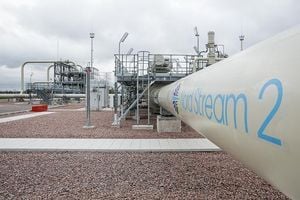As Vietnam continues to strengthen its agricultural backbone and protect its communities from health threats, two provinces are making headlines for their proactive approaches to both livestock safety and global market expansion. In the heart of Tien Lu commune, local authorities are distributing vital resources to livestock farmers, while in Thanh Hoa province, ambitious enterprises are pushing the boundaries of Vietnamese agriculture on the world stage. Together, these efforts showcase a nation determined to modernize, safeguard, and elevate its agricultural sector.
Between August 15 and September 15, 2025, the People's Committee of Tien Lu commune undertook a significant public health initiative: the distribution of seven tons of lime powder to livestock households across nine villages. According to local government records, this measure was part of a broader month-long campaign focused on environmental sanitation, disinfection, and detoxification in animal husbandry. The goal? To empower residents to proactively sanitize their farms, curb the spread of animal diseases, and ultimately protect both livestock and public health.
The allocation of lime powder was carefully calibrated to meet the needs of each village. Le Chi received 1,350 kilograms, Thuy Duong 1,150 kilograms, Lac Duc 1,200 kilograms, Thuy Loi and An Lac 800 kilograms each, Trieu Duong 600 kilograms, Yen 500 kilograms, Tan Khai 370 kilograms, and Lam Son 230 kilograms. By mid-September, all households had received their full allotment, ensuring that every corner of the commune was equipped to undertake thorough sanitation measures.
Local officials emphasized the importance of this support, noting that it not only helps prevent outbreaks of animal diseases but also contributes to the overall health of the community. The lime powder, commonly used in Vietnam for its disinfectant properties, enables farmers to maintain cleaner living conditions for their animals, reducing the risk of infections that could devastate herds and threaten livelihoods. The campaign reflects a growing awareness among Vietnamese authorities of the interconnectedness of animal health, food safety, and public well-being.
While Tien Lu commune focuses on disease prevention and environmental safety, Thanh Hoa province is making waves of its own—this time on the economic front. Leveraging its natural advantages in agriculture, forestry, and aquaculture, Thanh Hoa is positioning itself as a powerhouse in both domestic and international markets. The provincial government, according to reports from Bao Thanh Hoa, has rolled out robust support for local enterprises, encouraging innovation, technological upgrades, and improved product quality to meet the stringent demands of global consumers.
One standout example is Le Gia Food and Trading Service Co., Ltd, based in Hoang Thanh commune. The company has invested heavily in modern machinery and production techniques, transforming traditional products like fish sauce and shrimp paste into premium goods that can compete on the world stage. "Currently, Le Gia fish sauce and shrimp paste products are being sold at Winmart, Winmart+, Aeon, BigC/Top Market/Go, Co.op Mart, MM Mega Market, and nationwide distribution systems. Especially in recent years, some Le Gia fish sauce products have been exported to demanding markets such as the US, Japan, Hong Kong, Taiwan, Czech Republic, South Africa, Panama, Australia, and Singapore," said Le Ngoc Anh, the company's director, as quoted by Bao Thanh Hoa.
The drive for export is not limited to condiments. At the Hoang Giang agricultural product processing factory in Trung Chinh commune, director Hoang Ngoc Ha described how the company has signed contracts to export processed fruits and vegetables—chili, lychee, sweet corn, mango, and pineapple—to major markets, including the European Union, Russia, and the United Kingdom. "We constantly seek opportunities to cooperate with units and enterprises specializing in agricultural export to bring local agricultural products further, affirming the position and value of local agricultural products in the market. Through intermediary partners, in the fourth quarter of 2025, the factory signed contracts to export processed fruits and vegetables such as chili, lychee, sweet corn, mango, pineapple to major markets like the EU, Russia, UAE, UK," Ha explained.
Such successes are the result of a concerted effort by provincial authorities to improve the investment climate, support business development, and create sustainable supply chains for export. By August 2025, more than 50 enterprises in Thanh Hoa had joined the ranks of agricultural exporters, targeting markets in China, South Korea, Japan, Russia, the United States, and several European Union countries. This international reach, according to Bao Thanh Hoa, has helped elevate the value and reputation of Thanh Hoa's agricultural products.
To facilitate this growth, the province has established 79 registered production areas and one packaging facility, covering a total of 661.92 hectares and meeting export standards. These registered areas act as a "passport" for agricultural goods, providing traceability and compliance with international regulations. In addition, over 400 intellectual property certificates—including trademarks, geographical indications, industrial designs, and inventions—have been granted to local businesses, further enhancing their competitiveness and brand recognition abroad.
Government and local authorities are not resting on their laurels. They continue to invest in infrastructure upgrades, enforce food safety standards, and help businesses navigate the complex web of international trade requirements. There is a particular focus on expanding access to the lucrative Chinese and European markets, where demand for high-quality, certified agricultural products continues to grow. The province is also encouraging the use of digital technology and e-commerce platforms to promote products and streamline transactions, reflecting a broader shift toward modernization and global integration.
Local cooperatives and enterprises are being urged to upgrade their facilities and adopt international food safety standards, a prerequisite for breaking into new export markets. This push has led to the development of specialized production areas for key crops and the adoption of advanced processing and packaging technologies. The result is a steady stream of high-quality products that meet the diverse tastes and requirements of consumers around the world.
Back in Tien Lu commune, the focus remains on the basics: ensuring that farms are clean, animals are healthy, and communities are safe. But the story unfolding in Thanh Hoa offers a glimpse of what is possible when tradition meets innovation and when local initiative is matched by strategic government support. Whether it's a bag of lime powder handed out at a village office or a container of premium lychee shipped to Europe, these efforts are part of a larger narrative—one of resilience, adaptation, and ambition in Vietnamese agriculture.
As the country looks ahead, these dual strategies—disease prevention at the grassroots and global market expansion at the provincial level—may well define the next chapter of Vietnam's agricultural success.



